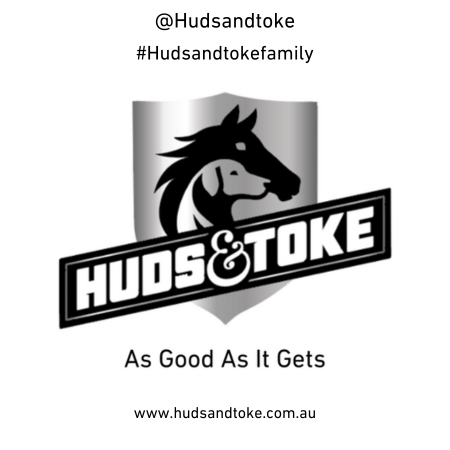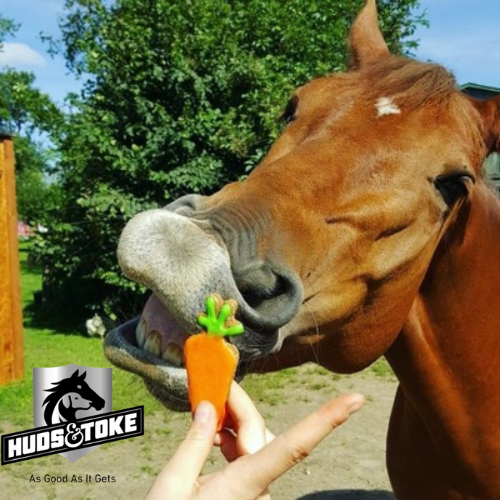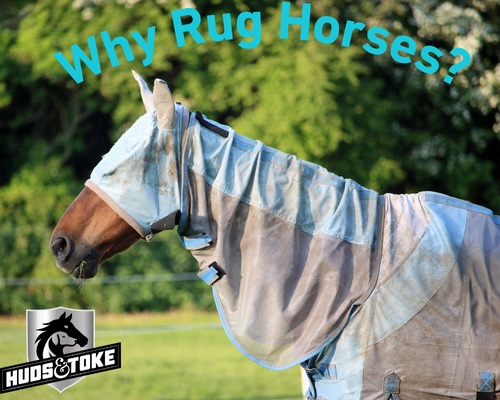Why Rug Horses?
Posted by Russell Gibbons on 23rd Aug 2024
Why Rug Horses
Rugging horses is a common practice, particularly during colder months or inclement weather. But why do we rug horses in the first place?

Protection from the Elements:
Rugs provide essential protection against wind, rain, and snow, helping to keep horses dry and warm. This is especially important for horses that are clipped or those with thinner coats who may struggle to maintain body heat.
Protection from nasties:
In some areas, as the weather warms up, or the humidity increases, so too does the insect activity. Hence it is sometimes necessary to keep a horse rugged simply to give it relief from biting insects such as Mosquitoes and Sand Flies etc....
Maintaining Condition:
In colder weather, horses burn more energy to stay warm. Rugging helps reduce this energy expenditure, which is especially beneficial for older horses or those in poor condition, ensuring they don't lose weight during the winter.
Reducing Grooming Time:
Rugs can also help keep horses cleaner, reducing the amount of mud and dirt they accumulate, which in turn can save time on grooming, particularly during wet and muddy seasons.
Managing Clipped Horses:
Horses that are clipped for competition, or to reduce sweating during exercise, may need additional warmth provided by rugs, as their natural insulation has been removed.
Comfort and Welfare:
For some horses, especially those kept in environments where the temperature fluctuates widely, rugging can offer a level of comfort that enhances their overall welfare by keeping them consistently warm and dry.
Horses are remarkably adept at regulating their body temperature. Our horses are quite comfortable in conditions that might leave us shivering.
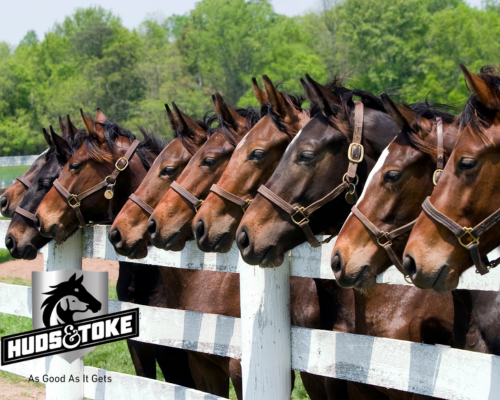
Points to consider as the weather warms:
Establish a Consistent Routine for Checking the Rug:
It's important to check the rug regularly. However, this means you need to train your pony to stand still and allow you to check every part of it, even if they don't like it on.
You need to ensure that it understands that it needs to be a well behaved pony whilst you are inspecting the rug and how it fits.
To do this, establish a regular routine..... Such as every morning and evening.
Then train your horse by giving them some Horse Treats as an encouragement to stand still.
Further to this, as a reward for behaving well once you have completed the check, give them more Horse Training Treats to let them know how well they have done!
The aim is to establish a clear habit where they feel comfortable and know what to expect everyday and understand that, in that very moment, you are there to check the Rug.
Correct Rug Size:
Ensure you are using the correct size rug!
It sounds simple but it is super important. The incorrect size can cause all sorts of problems for both you and the horse..... and provide very little solutions!
The rug should cover the horses body without restricting movement and you should definitely be able to firmly secure it with all the straps with ease.
For a basic size test, measure your horse from the centre of their chest to the base of their tail.
Correct Rug Placement:
Ensure the rug is placed correctly on your pony!
Place the rug slightly behind the withers, about 5-7 centimetres back from the shoulder blades and then ensure the rug sits evenly on both sides.
If the rug isn't placed correctly there is potential for restricted movement, tripping, catching on fences and branches etc....
Obviously, there are different styles of Rugs for different conditions, so this is a general rule. If you have a rug which includes neck coverage, then placement will be different.
However correct placement is still essential.
Simple attention to detail can save a lot of stress and hassle for both you and your pony.
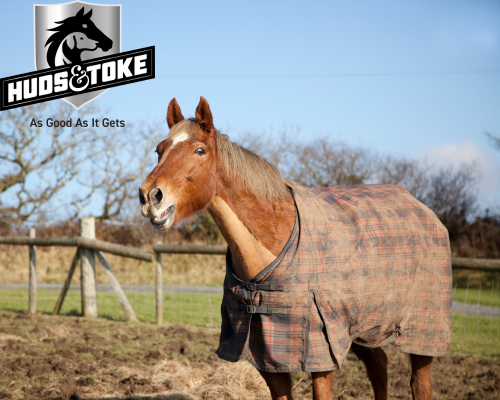
Check for Over Heating:
There are some simple signs with which you can identify if your pony is too warm.
Firstly, simply feel underneath the rug. If it is overly warm, or damp and sweaty, it's likely that your horse is too hot.
The best place to check this is just behind their withers.
For reference, the Withers is the highest point on the horses back and is formed just at the base of the horses neck where it meets the back.
Obviously, the temperature under the rug is what counts. So there is no point checking the warmth, or lack of, in other areas such as the ears as these are outside of the problem area and are a poor indicator of core temperature.
Consider the General Fitness:
Just like in humans, the fitter a horse is, the better they are at regulating their body temperature.
Being overweight help keeps you warmer in winter but means you feel the heat more in summer.
If your pony is carrying a few extra kilograms, or has been out of work, and thus, not very fit, then it may find it harder to cope with warmer weather.
Therefore, be aware that they need the rug less than fitter ponies.
So be sure to keep this in mind if you are rugging for warmth.
Be Aware of Food Intake:
Horses generate heat internally as they digest their food, particularly roughage. Therefore, the more hay you give them the more they can warm themselves.... to a point!
Understanding this, if you are rugging for warmth, remember that you don't need to increase roughage on colder days if you have your horse rugged.
Alternatively, if the weather is warming, and you are tempted to remove their rug, consider providing extra hay on those cooler days between the warmer ones rather than revert back to rugging.
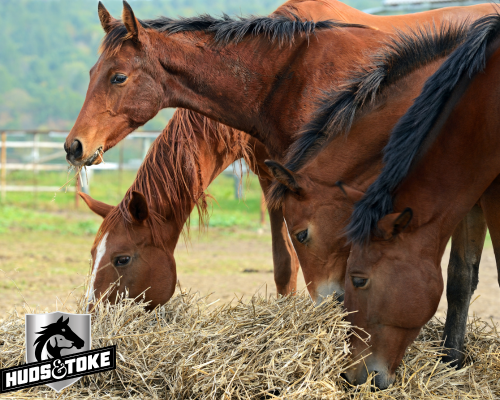
Heavy Rug, Or Light Rug?
Be aware that although there are different types of rugs for different conditions, that the base way all mammals manage heat is by sweating so that the breeze takes the heat away and the animal thus, cools.
Even a light rug can cause over heating as the weather gets warmer because it tends to still trap the heat.
Therefore, be aware of the weather conditions, and how they are changing. Just because it is a light rug doesn't mean it is right for the conditions.
Conversely, a light rug may not be warm enough if you have clipped your pony and then the weather gets very cold and wet!
So be aware of what your weather conditions are doing and make decisions on the thickness of your rug based on local weather.
Older Horses:
Horses that are older, or have health issues, may struggle to maintain their body temperature.
For these horses, adjust rugging based on their specific needs—lighter rugs or no rugs on warmer days, and ensuring they have adequate warmth during cooler periods.
Concerns to Watch for with Rugging
While rugging is essential for many horses in colder climates, it’s important to be aware of potential issues that can arise, particularly as the weather changes:
Getting Caught on Fences:
As horses move around, they may inadvertently catch their rugs on fences or other objects in their environment.
This can happen more frequently if a horse becomes frustrated or uncomfortable due to overheating.
Regularly check your horse’s environment for potential hazards and ensure rugs fit well to minimize the risk.
Overheating and Frustration:
If a horse becomes too warm under its rug, it may try to remove it, or rub against objects, leading to damage to the rug or even injuries.
Signs of overheating include restlessness, sweating, or excessive rolling.
Monitoring your horse’s behaviour and adjusting rugging accordingly can prevent these issues.
Remember, your horse isn't being naughty if it's trying to get the rug off. It's simply trying to tell you that it is not comfortable in it.....
Are you listening?
Rub Marks and Sores:
Ill-fitting, or poorly maintained rugs, can cause rub marks, sores, or chafing, particularly around the shoulders, withers, and chest.
Regularly check for signs of discomfort and ensure the rug is clean, fits properly, and is not too tight.
Mould and Dampness:
Wet or damp rugs can develop mould, which can irritate the horse’s skin and lead to infections. Always ensure that rugs are dried thoroughly after exposure to rain or sweat, and consider having a second rug available to rotate when one is drying.
Restricted Movement:
A rug that is too tight, or improperly fitted, can restrict a horse’s movement, making it difficult for them to walk, graze, or lie down comfortably.
Check that the rug allows for natural movement and adjust straps and fastenings as needed to ensure a good fit.
Responsible Rugging as Spring Unfolds
As we embrace spring and the warmth it brings, it’s vital to adjust our rugging practices to avoid overheating our horses. Always remember that your horse might be feeling much warmer than you realize, and when in doubt, it’s better to opt for lighter rugging, if you need to rug at all.
Remember, their hide is thick, and they grow hair!
They are more resilient to weather than we are, so if you don't need to rug, or are not in competition mode, it's ok to ask yourself the question...... Why am I rugging my Horse?
By staying mindful of our horses' needs as the seasons change, we can help them stay comfortable, healthy, and happy.
Have a great adventure with your ponies and please tag us in on our socials with your photos or you hanging out with your ponies!
All the best from the Huds and Toke team.
